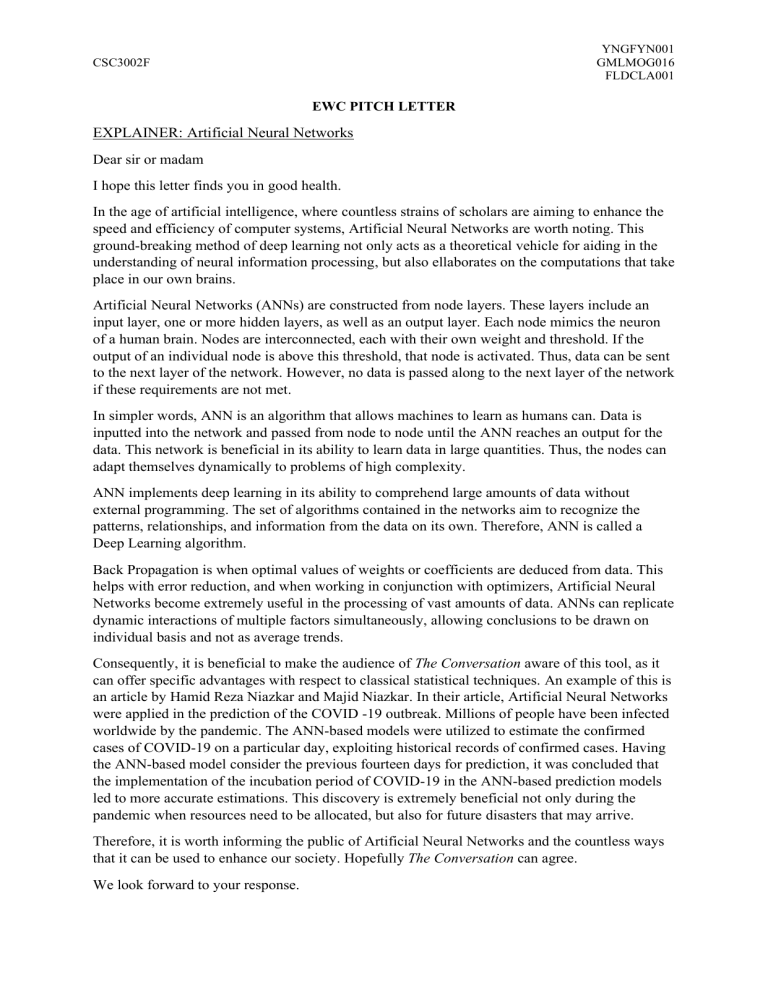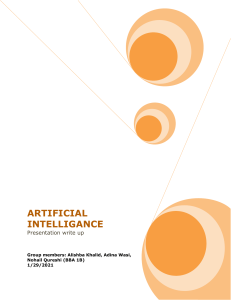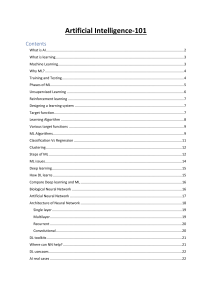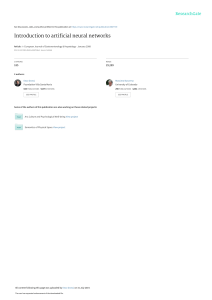
YNGFYN001 GMLMOG016 FLDCLA001 CSC3002F EWC PITCH LETTER EXPLAINER: Artificial Neural Networks Dear sir or madam I hope this letter finds you in good health. In the age of artificial intelligence, where countless strains of scholars are aiming to enhance the speed and efficiency of computer systems, Artificial Neural Networks are worth noting. This ground-breaking method of deep learning not only acts as a theoretical vehicle for aiding in the understanding of neural information processing, but also ellaborates on the computations that take place in our own brains. Artificial Neural Networks (ANNs) are constructed from node layers. These layers include an input layer, one or more hidden layers, as well as an output layer. Each node mimics the neuron of a human brain. Nodes are interconnected, each with their own weight and threshold. If the output of an individual node is above this threshold, that node is activated. Thus, data can be sent to the next layer of the network. However, no data is passed along to the next layer of the network if these requirements are not met. In simpler words, ANN is an algorithm that allows machines to learn as humans can. Data is inputted into the network and passed from node to node until the ANN reaches an output for the data. This network is beneficial in its ability to learn data in large quantities. Thus, the nodes can adapt themselves dynamically to problems of high complexity. ANN implements deep learning in its ability to comprehend large amounts of data without external programming. The set of algorithms contained in the networks aim to recognize the patterns, relationships, and information from the data on its own. Therefore, ANN is called a Deep Learning algorithm. Back Propagation is when optimal values of weights or coefficients are deduced from data. This helps with error reduction, and when working in conjunction with optimizers, Artificial Neural Networks become extremely useful in the processing of vast amounts of data. ANNs can replicate dynamic interactions of multiple factors simultaneously, allowing conclusions to be drawn on individual basis and not as average trends. Consequently, it is beneficial to make the audience of The Conversation aware of this tool, as it can offer specific advantages with respect to classical statistical techniques. An example of this is an article by Hamid Reza Niazkar and Majid Niazkar. In their article, Artificial Neural Networks were applied in the prediction of the COVID -19 outbreak. Millions of people have been infected worldwide by the pandemic. The ANN-based models were utilized to estimate the confirmed cases of COVID-19 on a particular day, exploiting historical records of confirmed cases. Having the ANN-based model consider the previous fourteen days for prediction, it was concluded that the implementation of the incubation period of COVID-19 in the ANN-based prediction models led to more accurate estimations. This discovery is extremely beneficial not only during the pandemic when resources need to be allocated, but also for future disasters that may arrive. Therefore, it is worth informing the public of Artificial Neural Networks and the countless ways that it can be used to enhance our society. Hopefully The Conversation can agree. We look forward to your response.





